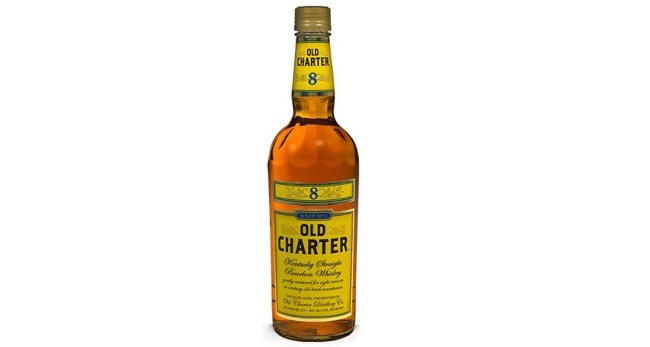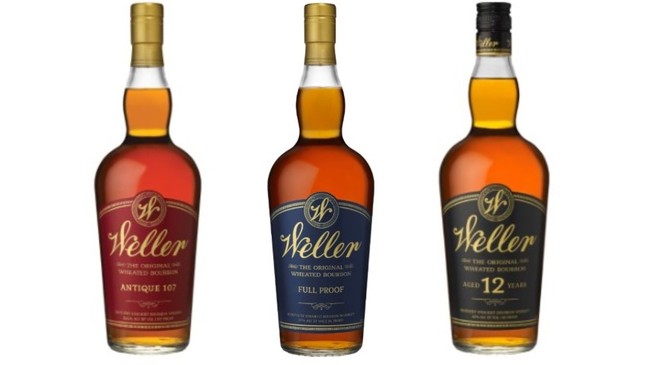The Complete Guide to Every Buffalo Trace Whiskey (Bourbon, Rye and More)
Photos via Buffalo Trace, Sazerac Co.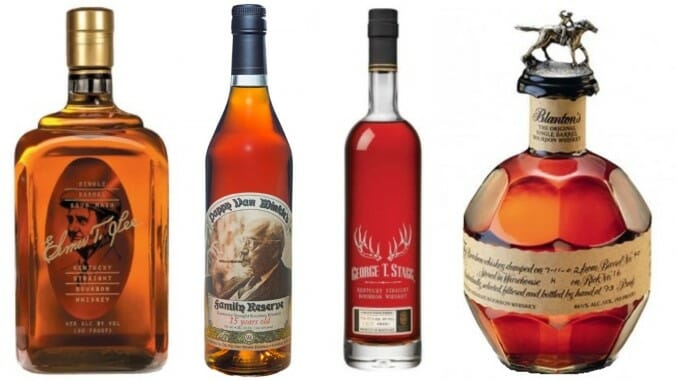
It’s safe to say that within the world of American whiskey, for better or worse, no other distillery even approaches the mystique with which Buffalo Trace is viewed by the bourbon community in particular. The popularity of its products in the last decade has played a major role in bringing countless new drinkers to whiskey as a passion or a hobby, but it’s simultaneously become the central object of interest in a whiskey industry that is now plagued by hype and rampant price gouging, often from retailers in addition to the lawlessness of the secondary market. The fervor for Buffalo Trace products has thus proven to be something of a double-edged sword for the industry.
And that’s a shame, because the inevitable (and necessary) discussion about the availability and pricing of Buffalo Trace products all too often obscures the ability of bourbon drinkers to objectively discuss and rate the whiskey in any given bottle. Even brands intended to offer a great value and rock-bottom prices have an unfortunate tendency to get swept up into the hype machine if they hail from Buffalo Trace, placing unfair expectations on bourbons that were never intended for much more than mixing with Coke.
At the same time, the average drinker—the rank and file whiskey fan who doesn’t wait in line outside of liquor stores on the day when the truck arrives, hoping for a bottle of Blanton’s—may still not be aware of just how many brands Buffalo Trace actually produces, not all of which are clearly labeled as Buffalo Trace products. Therefore, we present the following detailed buying guide to every single Buffalo Trace whiskey brand, divided up in what we believe is the most logical way: By mash bill.
![]()
Buffalo Trace’s Five Mash Bills
Almost all of Buffalo Trace’s various whiskeys, across numerous brands, fall into one of four specific mash bills, although five technically do exist. Things are complicated a bit by the fact that the exact percentages of any of the Buffalo Trace mash bills are not publicly available, as they are for many of the other classic Kentucky distilleries. At the end of the day, though, the most important distinction here is that BT features two main “classic bourbon” mash bills, along with a “wheated bourbon” mash bill and a “rye whiskey” mash bill. They are as follows:
— Bourbon Mash Bill #1: Pretty much universally referred to by drinkers as “Mash Bill #1,” this is the most common overall Buffalo Trace mash bill. It’s referred to as the “low rye” mash bill, reportedly featuring less than 10% rye overall. This mash bill can be found in everything from value brands such as Benchmark and Old Charter 8 to the flagship Buffalo Trace Kentucky Straight Bourbon, E.H. Taylor and sought-after bottles like George T. Stagg. They all share the exact same mash bill, being separated simply by age and maturation techniques. To many, this mash bill is the most frequently cited representation of Buffalo Trace’s specific house flavor profile.
—Bourbon Mash Bill #2: The #2 mash bill at Buffalo Trace is often referred to by drinkers as the “high rye bourbon” mash bill, although that’s really kind of misleading in a broader sense, as the 12-15% rye that is typically reported here is actually pretty standard for most bourbon distilleries—the “high rye” term isn’t often thrown around until about 20% rye or more. The most well-known mash bill #2 brand is likely Blanton’s Single Barrel, but it’s also used in both value brands (Ancient Age) and highly sought-after bottles such as Elmer T. Lee. The #2 mash bill also has the odd distinction of being used in several non-BT-branded bourbons that the distillery produces for other companies but doesn’t acknowledge on its website, including Rock Hill Farm and Hancock Reserve.
—Wheated Bourbon Mash Bill: Easily the most salivated over of the Buffalo Trace mash bills, the wheated spin on Buffalo Trace’s bourbon replaces the rye in the mash bill with a proportion of wheat—it’s unknown how much, exactly. The result is reputed to be more sweet, “smooth” and crowd pleasing. Notably, this is the mash bill that is used to make the infamous Pappy Van Winkle line, which are all wheated bourbons except for the Van Winkle Family Reserve Rye. It’s also the mash bill used to make the equally sought after William Larue Weller expression of Buffalo Trace’s Antique Collection, and the W.L. Weller line of more affordable (or at least they were designed to be) wheated bourbons. Bottles featuring this mash bill have been hit harder by price gouging than any other, as formerly bottom shelf selections like W.L. Weller Special Reserve can now command absurd prices of $100 or more as drinkers attempt to get a taste of “the next best thing” to Pappy Van Winkle.
—Rye Whiskey Mash Bill: The primary rye whiskey mash bill for Buffalo Trace likely looks quite a bit like the classic rye whiskey mash bills of other old-school Kentucky whiskey distilleries such as Jim Beam or Heaven Hill. Traditionally, these Kentucky-style ryes are roughly 51% rye, effectively offering a bridge between very high-rye mash bills and the more familiar profile of bourbon, which must be at least 51% corn. Bottles in this mash bill include everything from the flagship Sazerac Rye, to luxe bottles such as Thomas H. Handy Rye and the aforementioned Van Winkle Family Reserve Rye, being mostly separated by age, proof and maturation.
—“High Rye” Whiskey Mash Bill: Often forgotten is the fifth and final BT mash bill, which is used exclusively for E.H. Taylor Straight Rye. Curiously, this one is said to contain no corn at all, meaning that it would be made exclusively from rye and malted barley, which typically results in a much spicier, more dry take on rye akin to what is produced in Indiana by the likes of MGP. It’s the odd man out here, given that this mash bill is used to produce only one product.
So with that said, here’s a full breakdown of every single brand produced under each mash bill, in rough order of MSRP.
![]()
Buffalo Trace Mash Bill #1 Bourbons
As explained above, this is the “low rye” bourbon mash bill of Buffalo Trace, and the distillery’s most common overall mash bill. When someone says “Buffalo Trace bourbon,” the likelihood is that they’re imagining this mash bill.
Old Charter 8MSRP: $20 or less
Age: Non-age-stated
ABV: 40% (80 proof)
Old Charter No. 8 is a strange case—a historic brand with roots back to the 1800s, it has served over the decades as a bargain bin, bottom-shelf value brand for Buffalo Trace, but not one that has ever been given a ton of attention. As recently as the mid-2010s, this brand still actually carried an impressive 8-year age statement, but that was quietly removed at some point and the resulting whiskey is clearly now much younger—a classic example of the way that many old bourbon brands lost their age statements in this period.
Today this stuff can be hard to find, and it may have been largely discontinued, with a far greater focus on the “BT value brand” going instead to the similarly titled Benchmark Old No. 8, which is fulfilling much the same purpose. If you look online, though, Old Charter bottles can still be found quite easily, making this brand an eccentric footnote for BT. You may also be able to find a 101 proof variant of Old Charter as well, in addition to a separate brand also called Old Charter, which we’ll discuss later.
Benchmark Old No. 8 BourbonMSRP: $15
Age: 3 years
ABV: 40% (80 proof)
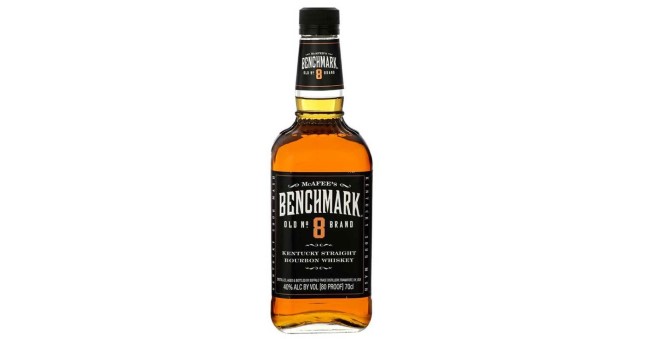
Benchmark has become the go-to Buffalo Trace bottom shelf value brand, known for delivering extreme bang for your buck and a very solid bourbon despite the small age statement—it performed extremely well in Paste’s own blind tasting of cheap bourbon brands. There’s nothing flashy about this bottle, but with prices that sometimes drop as low as $10 you’d be crazy to expect anything more than what it’s delivering.
Buffalo Trace’s Sazerac ownership, though, seemingly leaning into the hype around the brand at large, expanded the Benchmark lineup massively in 2021, adding variations such as Benchmark Bonded, Benchmark Full Proof, Benchmark Single Barrel and even “Benchmark Top Floor,” selected from barrels kept on the top floor of a rickhouse. Suffice to say, the reception has been mixed for these attempts to premiumize what was intended to be a bottom shelf workhorse brand. The classic Benchmark, however, remains an extremely good value.
Buffalo Trace White Dog Mash #1MSRP: $20 (375 ml bottle)
Age: Unaged
ABV: 62.5% (125 proof)
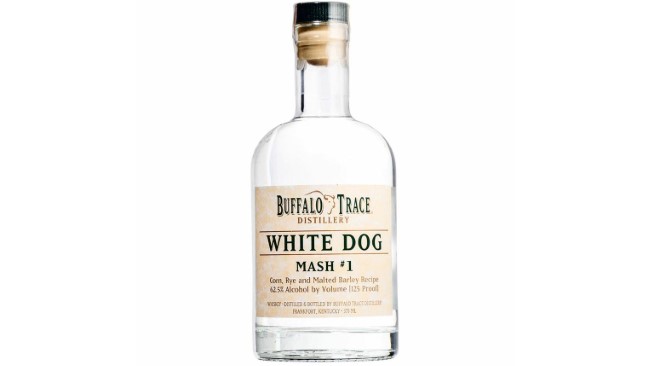
Buffalo Trace’s commercial “White Dog” releases are one part novelty, one part well-executed marketing gimmick, essentially giving the distillery license to charge premium prices (remember it’s a 375 ml bottle) for unaged whiskey, which could also legally be labeled as moonshine. The allure here is that you’re getting to taste this spirit at barrel entry proof (125 proof) before any aging has occurred, which makes it stand out from other moonshine on the shelves. Still, one gets the sense that this is the kind of product that would be largely ignored from other distilleries, but it benefits from the Buffalo Trace mystique. Bourbon geeks are especially keen on buying this White Dog Mash #1 to use in conjunction with small, novelty oak barrels for their own miniature batches of aged spirit, essentially trying to recreate George T. Stagg on their kitchen counters. Suffice to say, it’s not quite the same. This product is also available as White Dog of the Wheated Mash Bill (at 114 proof), and the Rye Whiskey Mash Bill (at 125 proof).
Buffalo Trace Kentucky Straight BourbonMSRP: $25
Age: At least 8 years
ABV: 45% (90 proof)
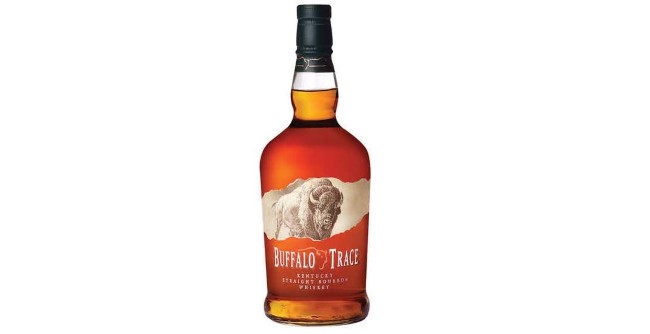
The flagship bottle of the Buffalo Trace brand is, when purchased at MSRP, still a fantastic value—unfortunately, availability of it varies dramatically from state to state and market to market. In some states, this is a reliable bottle that you can find at nearly any package store, delivering a balanced, easy drinking and full-flavored experience for $25. In other states, where the BT mania has more fully gotten its hooks into the local bourbon scene, this is a bottle that people stand outside liquor stores for hours waiting to buy. There’s very little rhyme or reason to it.
Suffice to say, the reality is that this bourbon is neither as good as its ardent fans would insist, or as bad as its detractors claim. It’s a moderately aged, classic Kentucky bourbon with a soft mouthfeel and people-pleasing sweetness, awash in gentle notes of caramel, vanilla, cherry and light oak, equally at home neat, over ice, or in a mixed drink. It’s extremely versatile, and an excellent introduction to the Buffalo Trace flavor profile. Do not get tricked into paying 100% or 200% MSRP for it.
Eagle RareMSRP: $30
Age: 10 years
ABV: 45% (90 proof)

At MSRP this is maybe the best pure value in the entire BT lineup, to the point that we actually wouldn’t begrudge Buffalo Trace bumping up the asking price on this one a bit—there really aren’t many other 10-year, single barrel bourbons left on the market that can be found in the $30-35 range, so it would be quite easily justified. This brand is essentially BT’s introduction to single barrel bourbons, so you can expect more potential variation from bottle to bottle compared with the more consistent flavor profile of the flagship bourbon. The extra age, coupled with the single barrel variation, often means a somewhat more oak-inflected or spicier profile, though it retains the approachable 90 proof of the flagship Buffalo Trace. All in all, a high-value pick for approachable neat drinking, and maybe the last bottle in Mash Bill #1 that you can hope to potentially find at MSRP.
The Eagle Rare brand also has a yearly 17-year-old expression in the Buffalo Trace Antique Collection, and the 20-year-old (and disgustingly expensive) Double Eagle Very Rare, which has so little availability that it can barely be said to exist at all.
E.H. Taylor Bottled in Bond SeriesMSRP: $40-70
Age: Non-age stated
ABV: 50% (100 proof) and above

Technically, the E.H. Taylor series of whiskeys is built around the concept of bottled-in-bond, a quality indicator that states a bourbon must be aged for at least four years, and bottled at 100 proof or more. From an age standpoint, pretty much every E.H. Taylor release surpasses this, although in true Buffalo Trace fashion the distillery doesn’t provide exact age statements for any of them. The most affordable E.H. Taylor Small Batch (MSRP around $40) is often said to be roughly 7-10 years in age, while the E.H. Taylor Single Barrel (MSRP around $60) is somewhat older. Most entries in the series are made with the classic Mash Bill #1, however, meaning that these are essentially amped-up versions of the same bourbon you’ll find in the flagship Buffalo Trace or Eagle Rare bottles. In terms of specs, in fact, a single barrel bottle of E.H. Taylor is quite similar to a 10-year-old single barrel bottle of Eagle Rare (just 10 proof points stronger), but the Taylor brand commands far more attention from bourbon geeks in the secondary market. E.H. Taylor Barrel Proof, meanwhile, is an annual release that brings the same bruising, 130 proof-type strength of the likes of George T. Stagg, and is among the most premium expressions of BT Mash Bill #1.
This is also the point in the ascending price points of Mash Bill #1 where your hope of finding any of these bottles for MSRP becomes very low indeed. Many package stores have begun to gouge significantly for the entire E.H. Taylor lineup, wanting a piece of those secondary market profits for themselves.
Old Charter Oak SeriesMSRP: $70
Age: 10 years
ABV: 45% (90 proof)
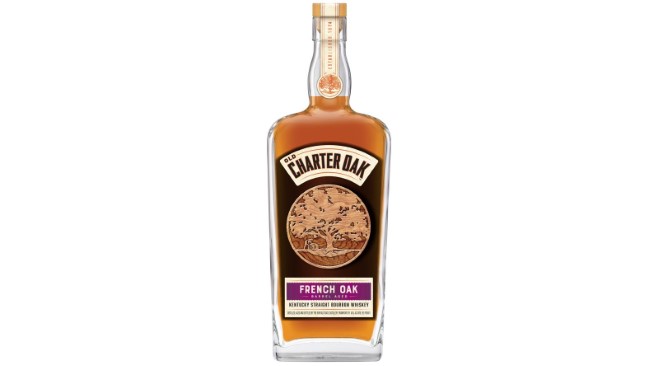
The Old Charter Oak series is particularly confusing, given that the budget brand “Old Charter” still seems to exist, but this is an entirely different concept—albeit one that is still built around Buffalo Trace Mash Bill #1. The idea here is both simple and exotic, as it just involves treating the same bourbon mash with a wide variety of different eclectic styles of oak. Almost all American whiskey is aged in American white oak bourbon barrels, whereas Old Charter Oak entries have been released in recent years in everything from French oak and Canadian oak to Mongolian oak and less common American Chinkapin oak.
Regardless, this is one of those BT series that doesn’t seem to attract nearly as much attention as others for whatever reason, perhaps because its more exotic nature limits its mass appeal to the rank and file “bourbon collector.” Still, these are all pleasantly unique experiences, and the oak experiment can be a valuable way for drinkers to understand the way different types of barrels have differing effects on a spirit.
Stagg Jr. (or just “Stagg”)MSRP: $60
ABV: Varies, roughly 65% ABV (130 proof)
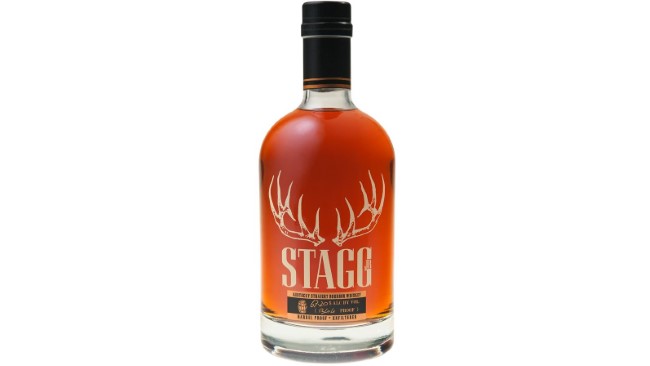
I genuinely believe that the first batch of Stagg Jr. was released with the best of intentions back in 2013, as a way for BT to offer its customers a very high-value, bang-for-your buck brand that would give them a taste of the company’s barrel proof spirit at a friendly price point. Unfortunately, though, this brand has been sucked into the Buffalo Trace hype and pricing mania perhaps more strongly than any other, meaning that a bottle with a $50 to $60 MSRP is now often found in stores at completely absurd markups of 500% or more—it is easy to browse online and find bottles of Stagg Jr. available not from secondary market sellers, but from package stores trying to gouge to the tune of $300, $400 or even more for each bottle. Suffice to say, at $400 that’s an almost 700% markup over MSRP. Which is to say, disgusting.
Ironically, the early batches of Stagg Jr. weren’t even particularly well received by drinkers, who cited them as too hot and overwhelmed by ethanol, but subsequent batches have seen the series round into form and do quite well in blind tasting settings. In 2021, the brand began dropping the “Jr.” from the title, in a move that feels intended to help justify the sky-high secondary pricing. The brand is now just “Stagg,” regardless of the fact that the extra-matured George T. Stagg is still the original “Stagg.”
Eagle Rare 17 Year OldMSRP: $99
ABV: 50.5% (101 proof)

Perhaps the most unsung bottle in the Buffalo Trace Antique Collection is Eagle Rare 17 Year Old, an annual release of the single barrel Eagle Rare series, albeit with significantly more maturity. Notably, it doesn’t have quite the proof of the other Antique Collection bottles (except for Sazerac 18 Year Rye)—instead this is just an extra, extra mature variant of Eagle Rare, again with the BT Mash Bill #1 recipe. Some advocates have a special fondness for that extra-oaked profile that comes with it, while other whiskey critics have a tendency to slag ER 17 on a yearly basis for not living up to the bombastic heights of the other Antique Collection bottles. It’s the kind of bottle that any bourbon geek would likely leap at the chance to purchase for the MSRP of $99, but few would specifically purchase it rather than the likes of William Larue Weller or George T. Stagg if given the opportunity to choose.
If you were hoping, meanwhile, that ER17’s lower profile would mean that its price is gouged less than other Antique Collection bottles, I can only say you’ll be sorely disappointed. You can buy a bottle online right now, in fact … provided you want to spend $2,500 on it.
George T. StaggMSRP: $99
Age: Varies, but often 15 years and older
ABV: Varies, roughly 60-70% (120-140 proof)
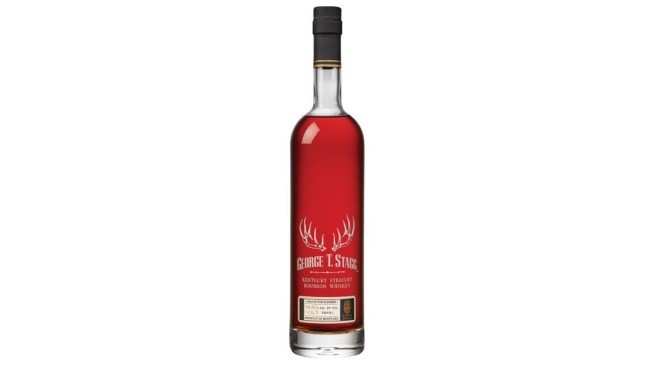
The true bruiser of the annual Antique Collection is George T. Stagg, the ultimate expression of Buffalo Trace Mash Bill #1 in terms of intensity and age statement. Its 15+ years of aging are why the other Stagg was previously named Stagg Jr., while the proof points have often soared to 140 proof and beyond. More recent years have brought more wild variations in ABV to this series, which has dipped to as low as 116 proof and again above 140, but practically any bottle or batch of George T. Stagg is an extreme flavor bomb. This is a brand that pulls no punches, and unsurprisingly is not for the faint of heart or casual bourbon drinker. A typical Stagg batch is an intense melange of fruit, spice and punchy oak flavors.
The drawback, obviously, is that it’s one of the hardest Buffalo Trace bottles to lay hands on in any given year. In fact, this is now made that much more difficult by the fact that the distillery decided not to release the 2021 batch of George T. Stagg at all, citing the fact that they weren’t satisfied with how the barrels had developed. That is one aspect where you have to give BT credit—their commitment to not release a product they believe is substandard is admirable.
![]()
Buffalo Trace Mash Bill #2 Bourbons
As explained above, this is the “higher rye” Buffalo Trace bourbon mash bill, which features about 12-15% rye in its grist. Things are a bit more complicated with this mash bill because the brands produced from it are primarily not actually owned by Buffalo Trace—most are owned by Takara Shuzo Ltd. of Japan, which owns other distilleries such as Scotland’s Tomatin. Buffalo Trace owner Sazerac, meanwhile, handles distribution and promotion of some of these brands such as Blanton’s in the U.S., while Takara Shuzo distributes them internationally. This results in a scenario where different versions of BT Mash Bill #2 bourbons can exist in different countries.
Ancient AgeMSRP: $10-15
Age: 3 years
ABV: 40% (80 proof)
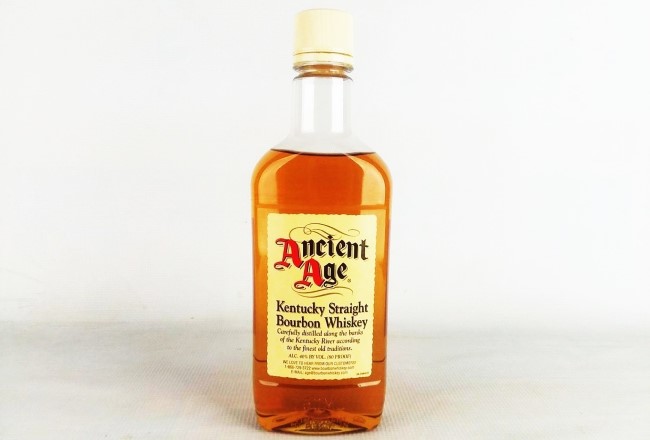
The Ancient Age brand can effectively be considered the bottom-shelf, ultra-value representative of Buffalo Trace bourbon Mash Bill #2, which essentially makes it the Benchmark of the “higher rye” mash bill. It does feature a more rye-centric flavor profile, with more minty herbaceousness, rye bread, pepper and cinnamon, but it also doesn’t punch above its weight class in quite the same way as Benchmark does, and it didn’t perform quite as well in our blind tasting of bottom shelf bourbon brands as its Mash Bill #1 brother. The branding, meanwhile, all but screams “legacy brand,” and one wonders if this one will ever get a refresh of some kind. It could probably use one.
Bourbon geeks, meanwhile, tend to keep an eye out for Ancient Age’s big brother, known as Ancient Ancient Age 10 Star, which has a 6 year age statement and higher 90 proof. Often suggested as a substitute for Blanton’s in particular, Ancient Ancient Age is something of a cult favorite, but it seems to have been largely discontinued in recent years. We wouldn’t be surprised if management decided that Ancient Ancient Age represented too good a value, and earmarked more of that liquid to be sold as premiumized brands instead.
Blanton’s Single Barrel BourbonMSRP: $60
Age: 6-8 years
ABV: 46.5% (93 proof)
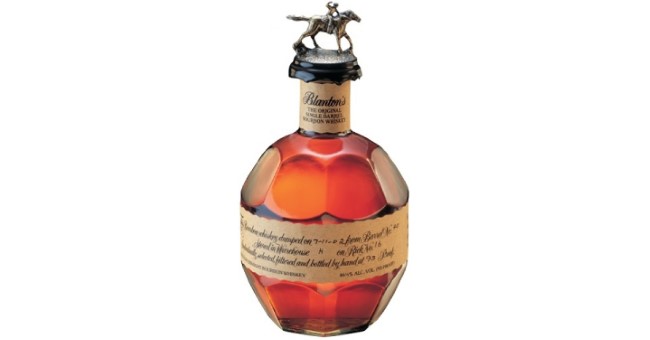
Often depicted as the poster child of the Buffalo Trace buying mania/hype frenzy, Blanton’s has a long and storied history, being the first single barrel bourbon widely available on the American market, back in an era when whiskey drinkers knew little to nothing about what single barrel status might imply. This whiskey did some serious work, therefore, in broadening the consumer’s knowledge about premium bourbon, and the American whiskey industry is indebted to it for helping to build that awareness. For decades, this stuff was widely available and well-liked by a certain subset of the bourbon drinking population. When the BT mania began in the 2010s, though, Blanton’s began to fly off the shelf as drinkers hoarded it and hunted it as trade bait to be used in the acquisition of other bourbons.
Today, Blanton’s has a reputation for being very divisive among bourbon geeks, with some raving about it and others going out of their way to show their disdain for what they regard as an extremely overrated brand that has attracted far too much attention and fascination. As ever, the truth lies in between—it’s a quality product that allows the consumer to experience the novelty of single barrel variation between bottles and batches, but it’s not something that any reasonable consumer should be paying 300% markups to acquire.
In the U.S., Blanton’s is distributed and marketed by BT parent company Sazerac, but several other variations (Blanton’s Gold, Blanton’s Straight From the Barrel, etc.) exist overseas, primarily for the Japanese market. These variations were released for the first time in a limited run in the U.S. in 2021, inspiring much fervor, hype and consternation. Good luck finding one, if that’s your quest.
Hancock’s President’s ReserveMSRP: $50
Age: Roughly 8 years
ABV: 44.45% (88.9 proof)
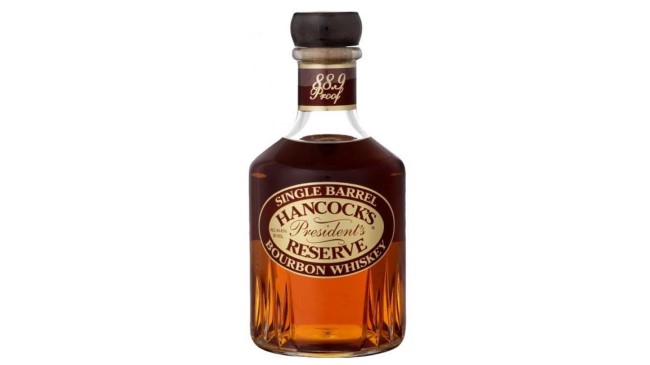
These next two entries, Hancock’s President’s Reserve and Rock Hill Farms, are probably the two most confusing releases in the Buffalo Trace canon, overlooked and mythologized all at once. Like Blanton’s, these are single barrel bourbons made from the higher rye Mash Bill #2 recipe, though presumably not aged in Blanton’s famous Warehouse H. They’re both often cited as 8-10 years old, though this is of course just rumor, as BT never confirms any of this information. Hancock’s stands out for the theoretically lower MSRP of $50, less than even Blanton’s, and the fact that its 88.9 proof is lower than any of the other Mash Bill #2 single barrel bourbons, except for the rarely seen Blanton’s Special Reserve (80 proof) available in Japan.
Releases of both Hancock’s President’s Reserve and Rock Hill Farms seem to be sporadic, and unlike Blanton’s these bourbons aren’t regularly available, which makes it difficult for them to build wider recognition—as does the fact that Buffalo Trace doesn’t acknowledge their existence on its own website even though they distill and age the liquid. None of that stops the online gouging, of course, as this “$50 bottle” is routinely priced at $500 or more online.
Rock Hill Farms BourbonMSRP: $60
Age: Roughly 8 years
ABV: 50% (100 proof)
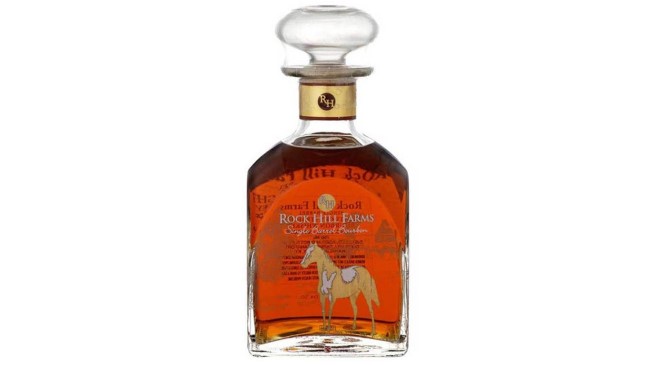
Taken completely at face value, Rock Hill Farms would theoretically be the best overall value in the Mash Bill #2 lineup, primarily because its 50% ABV (100 proof) puts it even with Blanton’s Gold, which sported an MSRP of $120 when it was briefly made available in the U.S. in 2021. To get almost the same thing for $60 would therefore be quite the coup, but unless you live in a market with state-controlled liquor stores or win a package store lottery, you’re very unlikely to have an opportunity to buy this at MSRP. Like the previous Hancock’s President’s Reserve, this is yet another single barrel expression of Mash Bill #2, but it’s also released in sporadic, limited quantities without any apparent rhyme or reason, and not nearly as much reliability as the likes of Blanton’s. And just as with the last entry, bottles are routinely priced at $500 or more online, in order for resellers and unscrupulous package stores to take advantage of its lack of availability.
Elmer T. Lee Single Barrel BourbonMSRP: $40
Age: NAS
ABV: 45% (90 proof)

Elmer T. Lee is a brand that truly illustrates the disconnect between Buffalo Trace MSRPs and the hype that has built around the company’s brands in the last decade. The fact that the MSRP of Elmer T. Lee is supposedly only $40 isn’t something that makes a particular lot of sense, given that it previously sported a significantly higher age statement than Blanton’s, but the loss of that age statement likely implies it is now much younger. Still, the fact that this single barrel Mash Bill #2 bourbon releases more infrequently than Blanton’s would imply it’s the more “premium” product, and the market subsequently treats it as such, as the resale value of Elmer T. Lee is much higher than Blanton’s. And yet, both the proof and MSRP of Elmer T. Lee is lower than Blanton’s. Suffice to say, it just doesn’t make any real sense, but that doesn’t stop bottles of Elmer T. Lee from being priced in the $400 range online.
In reality, there’s little to actively differentiate “ETL” from other Mash Bill #2 bourbons—it sits in a very similar range to the likes of Blanton’s and Hancock’s Presidential Reserve at this point, and without more information from its ownership on what its specs (such as age) now are, it’s impossible to say what additional niche it truly serves. It’s absolutely fair to say that rarity is the primary rationale for its inflated secondary market cost.
![]()
Buffalo Trace Wheated Mash Bill Bourbons
You thought that the Mash Bill #2 bourbons from Buffalo Trace were highly sought after and hard to acquire? Oh you sweet, summer child. Welcome to the big leagues, the wheated bourbon mash bill. As is the case with so many other BT products, the actual percentages here are unknown—all that is known about this legendary mash bill is the fact that the traditional rye percentage has been replaced with wheat, at an unknown level. Traditionally, this is said to yield a sweeter, richer bourbon with a soft mouthfeel and emphasis on flavors such as caramel, vanilla, bread, florals and grass. Many bourbon geeks have also observed that wheated bourbons seem to hold up well to extended aging.
The popularity and cult status of brands made with this mash bill, however, such as W.L. Weller, Pappy Van Winkle and William Larue Weller, has had a dramatic effect in terms of increasing the popularity of wheated bourbon mash bills in general at other distilleries in recent years, especially young whiskey distilleries that want to capitalize in some way on the fervor for Pappy-ish products. There’s a lot of young wheated bourbon on the scene these days, and this mash bill is undoubtedly one of the main reasons why.
W.L. Weller SeriesMSRP: $25-50
Age: 7-12 years
ABV: 45-57% (90-114 proof)
No other “value” brand coming out of Buffalo Trace was hit so hard by hype inflation as W.L. Weller in recent years, owing largely to the fact that it shares the same wheated mash bill as the legendary Pappy Van Winkle. As the mania and obsession over Pappy grew, and word got out that W.L. Weller was supposedly “the poor man’s Pappy,” secondary market valuation turned this brand from one that had been a bottom shelf wheated bourbon value brand for decades into one that whiskey collectors buy wherever they can to use as trade bait. The $25 bottle of W.L. Weller 12 Year I once bought for my roommate’s birthday in college is now a $400 bottle from many price-gouging package stores, even though the stated MSRP from Buffalo Trace is only $40. Even the younger, 90 proof W.L. Weller Special Reserve often fetches $100 or more. It’s little wonder that few of these bottles can live up to the pedestal they’ve been placed upon.
Within the range, MSRPs fall in a tight range between $25-50, but good luck ever finding them for their stated cost. They likewise range in strength, as the flagship Special Reserve and 12 Year are both a mere 90 proof, while Old Weller Antique falls at 53.5% ABV (107 proof) and Weller Full Proof falls closer to 114 proof. The distillery only increased the hype in recent years by rolling out more expressions, such as the non-age-stated W.L. Weller Single Barrel (97 proof), or Weller C.Y.P.B., which stands for “Craft Your Perfect Bourbon,” and was fittingly created from consumer feedback. Unfortunately for those consumers, it doesn’t seem as if there’s any remaining way to experience these bourbons without paying a predatory markup.
William Larue WellerMSRP: $99
Age: Roughly 12 years
ABV: Roughly 62.5-70% (125-140 proof)

If this list has taught you anything, perhaps it should be that Buffalo Trace products often sport repeated, slightly confusing names, at least to the uninitiated. Just as there are multiple “Old Charters,” and multiple “Staggs,” so too are there multiple “Weller” brands. While the acronymed W.L. Weller is at least meant to be the higher value brand, the fully spelled out William Larue Weller is the masterful entry of the BT Wheated Bourbon Mash Bill in the annual Antique Collection, and it’s also presented with a beefy age statement and imposing cask strength. Taken all together, these elements make for a decadent, rich, beguiling bourbon that many tasters have a tendency to describe as the finest product coming out of Buffalo Trace on a yearly basis. To be sure, every bottle in the Antique Collection has many fans, but given a choice of only one, I have to imagine that William Larue Weller would be the #1 selection for the majority of drinkers—and with good cause.
It is notable that although the Pappy Van Winkle series (which is also the wheated bourbon mash bill, remember) can boast some bigger age statements, none of its entries is presented at anything close to this proof point. For “proof hounds,” that’s a major consideration when they’re deciding which brand they’d like to get gouged on in purchasing. Suffice to say, you’re going to get gouged in truly epic fashion on this one.
Pappy Van WinkleMSRP: $70-300
Age: 10-23 years
ABV: 90.4-107 proof

Ah yes, the time is finally here to talk about Pappy. Suffice to say, this brand is why the Buffalo Trace mania exists as we know it today. The roots of people chasing trucks for Blanton’s or E.H. Taylor all comes back to Pappy in the end—the mystique around this wheated bourbon is what built a generation of whiskey collectors who bought into a groupthink that only Buffalo Trace products mattered. And when they couldn’t get Pappy, they came for the Antique Collection. And when they couldn’t get the Antique Collection, they came for W.L. Weller. And when they couldn’t get W.L. Weller, they came for Blanton’s. And so forth, and so forth, until you end up with half a dozen “special” versions of Benchmark. It all flows from Pappy.
As for the line itself, it ranges from the still at least somewhat accessible Old Rip Van Winkle 10 Year (107 proof, which is nice) or Van Winkle Lot B 12 Year (90.4 proof, less inspiring), to the “true” Pappys, which are the extra-aged 15, 20 and 23 Year expressions. Those are the bottles you can expect to pay thousands and thousands to acquire, unless of course you happen to have friends down at the package store who operate your local lottery system … wait, that never happens. Forget I said anything, okay? Maybe you’ll get lucky and win one of these at a charity auction someday? Or you can hit a local bar and pay a few hundred dollars for a 1 oz pour.
It’s times like these that I’ll also remind you gently that 10-year-old Eagle Rare exists, and costs about $30.
![]()
Buffalo Trace Rye Whiskey Mash Bill
We know about as little of the actual makeup of this most common Buffalo Trace rye whiskey mash bill as we do about all the others, but in this case it’s pretty safe to assume that BT is following the very standard, traditional Kentucky rye playbook, which is a mash bill of only 51% rye, with the remainder made up of corn and malted barley. Almost all of the major players in Kentucky bourbon (such as Beam, Heaven Hill, Wild Turkey, etc) produce their ryes this way, and the “barely legal” rye was pretty much the universal standard for the style for decades in the U.S. before rye from Canada and Indiana (at MGP) began to build more of an appreciation for “high rye” whiskeys in more recent years, with mash bills featuring 90% or more rye. Today, the market is split between this newer, popular style of rye and the older, traditional style still produced by the Kentucky stalwarts. Buffalo Trace’s ryes almost certainly fall into the latter camp.
Sazerac RyeMSRP: $30
Age: 4-6 years
ABV: 45% (90 proof)

Buffalo Trace’s value rye brand bears the name of its parent company, and an important lineage tied to its history in New Orleans and the eponymous Sazerac cocktail. Known to fans as “Baby Saz,” this product was once marketed by the distillery as being six years old, but like others it eventually lost any reference to an age statement, and is now assumed to be somewhat younger. Known to be particularly fruit forward in flavor, drinkers often describe notes of stone fruit, orange and anise-like spice, although it has more bourbon-like sweetness than the bolder, spicier, drier style of rye that has increasingly become the norm in the last decade. These types of flavors have a tendency to carry through all the rye whiskeys made with this mash bill at Buffalo Trace.
As for pricing, Sazerac Rye has been caught up to some degree in the BT hype storm, but its pricing seems pretty inconsistent—it’s still possible to find it at normal MSRP in some places, but in others you’ll find it gouged to absurd degrees. Regardless, it’s nice that an act of God isn’t typically necessary to find this.
Sazerac 18-Year-Old RyeMSRP: $99
Age: 18 Years
ABV: 45% (90 proof)
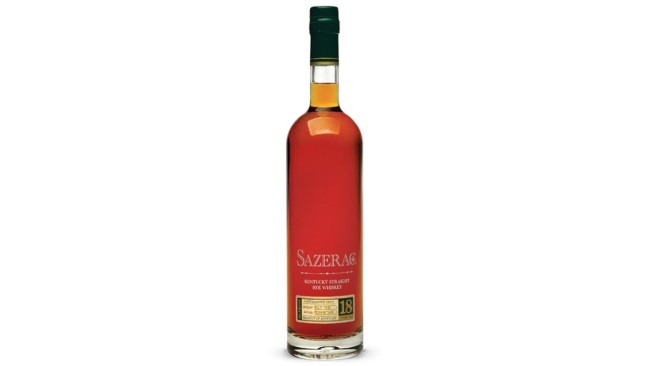
When it comes to upgraded versions of Baby Saz, you basically have to choose whether you value maturity, or intensity. If you want a much older version of what is essentially the same whiskey, you go with Sazerac 18, which unsurprisingly gains much more oak influence and mature character in aging for more than three times longer than the flagship product. If, on the other hand, you want a higher proof point you instead go with the Thomas H. Handy Sazerac Rye, which has a much smaller age statement but a soaring ABV and bombastic flavors. The two rye entries in the Buffalo Trace Antique Collection, they’re a study in contrasts because they each treat the rye mash bill very differently.
With that said, it often feels as if Sazerac 18 ends up as one of the overlooked entries in the Antique Collection, in much the same boat as Eagle Rare 17 Year. Rest assured, there are fans of its profile, often described as having more marzipan/almond and burnt oak/creme brulee/tobacco, but when push comes to shove it seems like a lot of consumers gravitate toward Thomas H. Handy and its proof points of 130 or more.
Thomas H. Handy Sazerac RyeMSRP: $99
Age: 6+ years
ABV: About 65% (130 proof)
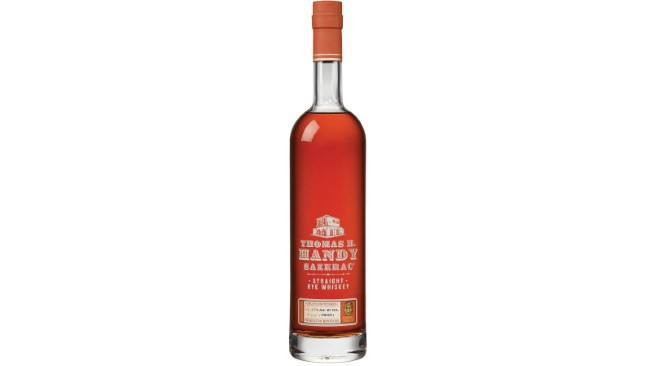
Buffalo Trace’s “kick the doors down, take no prisoners” rye doesn’t have the most impressive of age statements—hell, it’s younger than the flagship Buffalo Trace bourbon—but its massive, cask strength proof point is its calling card. Unsurprisingly, this one is less about nuance than it is sheer bombast and brute force, a flavor bomb that hits as hard as anything else in the lineup with the possible exceptions of Stagg Jr. and George T. Stagg. Expect massive tones of dried fruit and spice, coupled with roasted nuts and caramelized sugars.
Likewise expect to spend roughly the same amount on a bottle that you’d spend on a month’s rent.
Van Winkle Family Reserve Rye 13 Year OldMSRP: $120
Age: 13 years
ABV: 47.8% (95.6 proof)

It feels disingenuous to call any member of the Pappy Van Winkle family the “forgotten” entry, and yet people really do seem to still overlook the one rye whiskey of the group to at least some extent. Of course, it still costs almost as much on the secondary market as all the bourbons—it’s telling that you’ll pay far more for this bottle online than you would for the more mature Sazerac 18 Year, despite the fact that they come from the same mash bill. That monetary difference, that’s the bump that the “Pappy” name commands.
Once upon a time, this rye was something of a unique item in a market that was bereft of comparable, well-aged rye whiskeys, but the last decade has seen many older ryes emerge on the scene as more whiskey drinkers have come to treat rye as worthy of their neat drinking attention. Today, you can often find several outstanding ryes in the 10-15 year range, none of which are likely to command the price of a used car from the package store. Just a thought, folks.
![]()
Buffalo Trace “High Rye” Whiskey Mash Bill
And finally, we have the one oddball Buffalo Trace mash bill left, the so-called “high rye whiskey” mash bill. Note that this is still rye whiskey we’re talking about here, rather than high-rye bourbon, which would by law be at least 51% corn. The BT “high rye” whiskey mash bill, meanwhile, is reportedly quite unique for Kentucky rye in the fact that it doesn’t contain any corn at all, which likely makes it much more akin to MGP’s famed 95% rye, 5% malted barley recipe. This is pretty unusual for a Kentucky bourbon distillery, and it does seem to show Buffalo Trace’s interest/willingness in expanding past traditional thinking.
With that said, this mash bill is apparently only used in a single brand as of this moment, which is E.H. Taylor Straight Rye. That number of brands will reportedly double in 2022, however, when BT introduces a new barrel proof version of E.H. Taylor Straight Rye. We look forward to not seeing any of that on store shelves very soon.
E.H. Taylor Straight Rye WhiskeyMSRP: $80
Age: Rumored 9 years
ABV: 50% (100 proof)
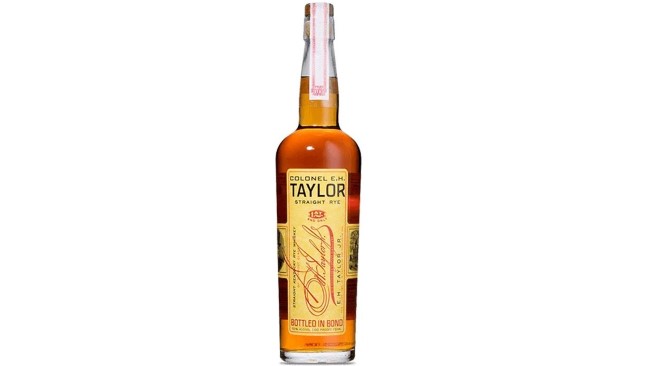
Like the other E.H. Taylor series whiskeys this is built around the “bottled in bond” concept, and has the corresponding 100 proof you would expect, but is considerably older, especially for a rye whiskey. One has to imagine that the “high rye” mash bill was created as a response to the rise in popularity of so many sourced rye whiskeys from the likes of MGP and elsewhere. In comparison with the more traditional Buffalo Trace rye whiskey mash bill found in Sazerac Rye and others, this one will likely register to drinkers as less sweet and bourbon-like, with more intense notes of pepper, citrus, rye bread and baking spices.
It’s interesting that the MSRP is notably higher than other entries in the E.H. Taylor series, and also higher than any one of the Bourbon Mash Bill #2 whiskeys, but E.H. Taylor Straight Rye actually has lower secondary market valuations than most of those other bottles. That may indicate that this is a more reasonable MSRP for the whiskey’s true value, and there’s subsequently less of a market for reselling it. With that said, it’s still Buffalo Trace, so online whiskey retailers are still trying to charge $300 for it. Which is all to say: When you’re shopping Buffalo Trace brands, and you expect to be gouged, you’ll rarely be disappointed.
Jim Vorel is a Paste staff writer and resident beer and liquor geek. You can follow him on Twitter for more drink writing.
